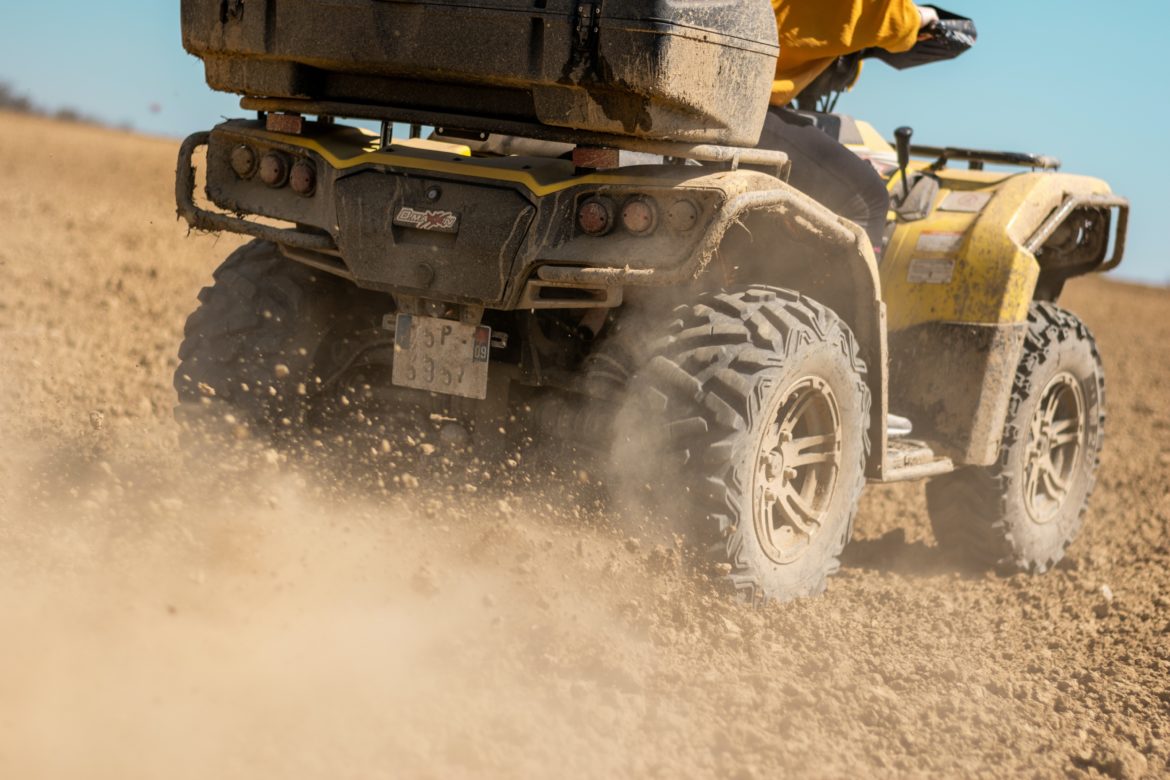
Recreational Vehicle Insurance
Are you using ATVs and UTVs around the farm? Here’s what you need to know about your insurance.
Recreational vehicles are most commonly classified at All-Terrain Vehicles (ATVs) and Utility-Terrain Vehicles (UTVs). These recreational vehicles have become an invaluable tool on farms and ranches. In many cases, these recreational vehicles have replaced pickup trucks and horses for doing most jobs. Since most farmers and ranchers have at least one type of recreational vehicle, I thought it would be a good idea to talk about what kind of coverage you need to have for these vehicles.
The easiest thing to talk about first is physical damage coverage. This is what you need to have if your ATV or UTV is damaged or stolen. One of the first questions most people will ask is “isn’t my ATV covered under my blanket?” The answer is, no. So if you want coverage for an ATV or UTV, they must be listed on the policy for physical damage coverage. They can be scheduled on your farm policy or they can be written under a separate recreational vehicle policy. Following is the list of items not covered under a typical farm personal property blanket.
Property Not Covered Under the Blanket
Automobiles, trucks, mini trucks, motorcycles, mopeds, utility vehicles, low speed vehicles, motorized all-terrain vehicles, amphibious vehicles, dune buggies, golf carts, snowmobiles, mini bikes, trail bikes, mobile homes, house trailers, and vehicles primarily designed and licensed for road use, including their engines, tires, parts, and accessories. However, wagons and trailers designed for farming purposes are covered unless designed to be pulled by a semi-tractor.
Ok, so we have the physical damage part out of the way. Let’s talk about the bigger issue, liability. This gets a little more complicated and there are differences between the liability coverage on your farm policy and the liability coverage on a separate recreational vehicle policy. The first thing you need to know is you do have some automatic coverage for recreational vehicle liability under a farm and ranch liability policy that is included at no additional premium. The most important thing you need to know about this automatic coverage is that it only applies to liability that occurs on your insured premises. This means you do not have liability coverage while crossing a road or traveling on any road or property you do not own. I would venture a guess most people don’t have a recreational vehicle they operate 100% of the time on their insured premises. So, we really need to talk about how we insure our recreational vehicles off premises and what the differences are between policies.
Off premises liability coverage can be added to most farm and ranch policies. The liability limit falls under the farm and ranch liability limit and is not separate. So, if you have a $1,000,000 farm and ranch liability limit and you add off premises liability for you recreational vehicle, it has $1,000,000 of liability coverage. The other option we have is to write a separate recreational vehicle policy.
There are some advantages to having coverage on a separate recreational vehicle policy rather than placing coverage under the farm policy. The RV policy can have smaller physical damage deductibles. Sometimes the farm policy can have a $1000 or higher deductible that can’t be changed when we add physical damage to an RV. A separate policy allows you to have a lower physical damage deductible like $250 or $500 per occurrence. Another advantage is having a separate liability limit from your farm policy. By having a separate liability limit, you preserve your farm liability limit and keep unwanted liability claims off your farm policy. However, one of the most important reasons for having a separate RV policy is the medical payments coverage.
There are some advantages to having coverage on a separate recreational vehicle policy rather than placing coverage under the farm policy. The RV policy can have smaller physical damage deductibles. Sometimes the farm policy can have a $1000 or higher deductible that can’t be changed when we add physical damage to an RV. A separate policy allows you to have a lower physical damage deductible like $250 or $500 per occurrence. Another advantage is having a separate liability limit from your farm policy. By having a separate liability limit, you preserve your farm liability limit and keep unwanted liability claims off your farm policy. However, one of the most important reasons for having a separate RV policy is the medical payments coverage.
Medical payments coverage is what covers the rider(s) that might be injured in an accident. There can be some big differences here depending on whether the coverage is on the farm or an RV policy. Here are two examples showing the difference in medical payments between a farm policy and an RV policy.
Example 1 – Farm Policy RV Medical
On Premises: Coverage
Insured Person: NO
Other Than Insured Person: YES
Farm Employee: YES
On Premises: Coverage
Insured Person: NO
Other Than Insured Person: YES
Farm Employee: YES
Off Premises: Coverage
Insured Person: NO
Other Than Insured Person: NO
Farm Employee: YES
Insured Person: NO
Other Than Insured Person: NO
Farm Employee: YES
Example 2 – RV Policy Medical
On Premises: Coverage
Insured Person: YES
Other Than Insured Person: YES
Farm Employee: YES
On Premises: Coverage
Insured Person: YES
Other Than Insured Person: YES
Farm Employee: YES
Off Premises: Coverage
Insured Person: YES
Other Than Insured Person: YES
Farm Employee: YES
Insured Person: YES
Other Than Insured Person: YES
Farm Employee: YES
The recreational vehicle provides the broadest medical payments coverage. This is usually the factor most people use in choosing where to insure their recreational vehicles.
As you move into spring/summer, please take the time to review your farm and ranch policy. If you haven’t looked at putting your ATVs or UTVs on a separate recreational vehicle policy, it might be a good time to take a closer look. As always, we are here to help and can answer any questions you may have.
